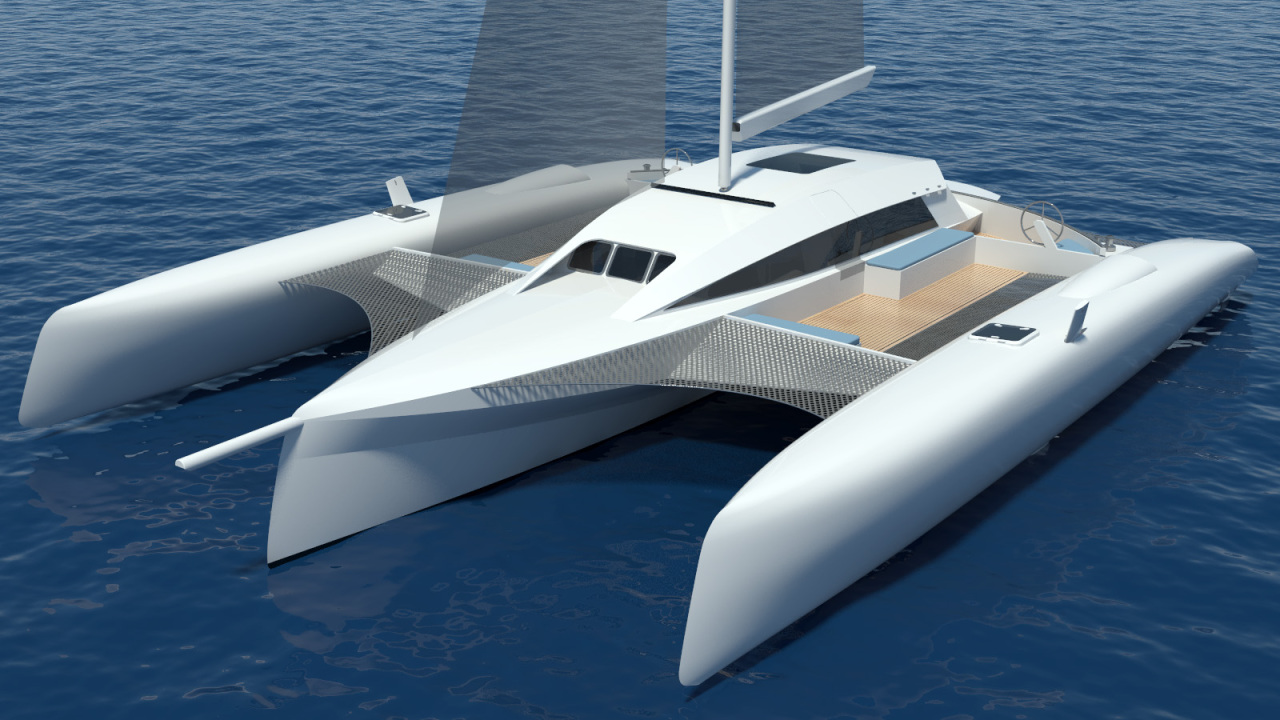[EXCLUSIVE] Hyundai Motor developing ‘marine’ mobility platform powered by seawater
By Kim Byung-wookPublished : Jan. 27, 2022 - 13:32

Hyundai Motor will develop a marine mobility platform powered by seawater by 2023 to replace small and mid-sized diesel ships polluting the sea. The project has been directly reported to Hyundai Motor Chairman Chung Euisun.
According to industry sources Thursday, the automaker is developing a 15-20 meter-long yacht powered by the firm’s hydrogen fuel cells. The trimaran yacht has three hulls, each of which is installed with equipment to break seawater into hydrogen. Then, hydrogen fuel cells mounted inside the hulls will use the extracted hydrogen to power propellers. Solar panels installed on the sail and two vertical wind turbines mounted on the platform will generate clean electricity to break seawater into hydrogen. The price per unit is 4.5 billion won ($3.7 million).
“The project is led by Ha Hak-soo, design director at Hyundai Motor and has been briefed to Chung Euisun,” a high-ranking industry official told The Korea Herald.
“Depending on what you put on top of the platform, it can become a cargo ship, passenger ship or waste disposal ship. Through the project, Hyundai Motor is targeting the standardization of small and mid-sized hydrogen ships.”
Ha Hak-soo, who designed the new marine mobility platform, is the designer behind e-Bogie, a trailer drone unveiled last September. Powered by hydrogen fuel cells, the fully autonomous semi-trailer can work in pairs to transport containers. Each bogie can drive 1,000 kilometers in a single charge. The marine mobility platform is the follow-up of e-Bogie.
Kim Pil-soo, an automotive engineering professor from Daelim University, said that the commercialization of the carmaker‘s marine mobility platform hinges on its price.
“In South Korea, there are thousands of diesel ships more than 20 to 30 years old. They are beyond repair and are polluting the environment. There is a demand to replace them, but it remains to be seen how cheaply Hyundai Motor can produce the new marine mobility platform,” Kim said.
“Electric vehicles are leading the trend, and Hyundai Motor’s hydrogen vehicle Nexo vehicles aren‘t profitable due to the costs of setting up the necessary infrastructure. So the automaker‘s direction of targeting hydrogen ships is correct.”
Hydrogen ships have yet to be commercialized, not only due to their lack of economic feasibility, but also because of technological challenges. Hydrogen ships face air resistance hundreds of times greater than EVs. To power hydrogen ships, hydrogen fuel cells and batteries of much greater capacities have to be installed. This creates a larger magnetic field however, which can cause malfunctions in components such as sensors and chips.











![[Today’s K-pop] BTS pop-up event to come to Seoul](http://res.heraldm.com/phpwas/restmb_idxmake.php?idx=644&simg=/content/image/2024/04/17/20240417050734_0.jpg&u=)




![[KH Explains] Hyundai's full hybrid edge to pay off amid slow transition to pure EVs](http://res.heraldm.com/phpwas/restmb_idxmake.php?idx=652&simg=/content/image/2024/04/18/20240418050645_0.jpg&u=20240419100350)

